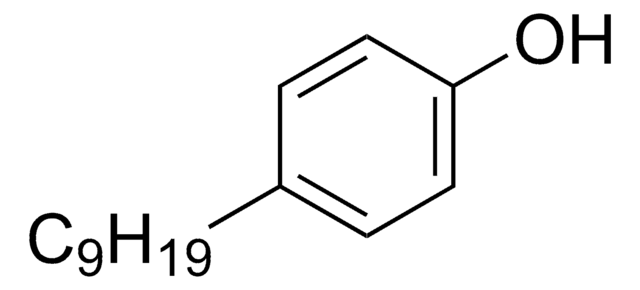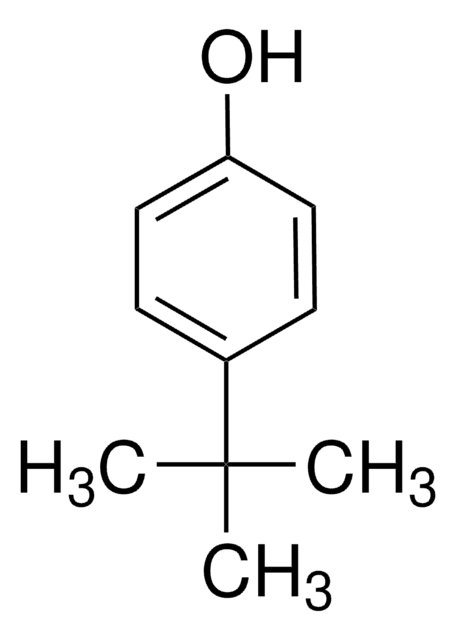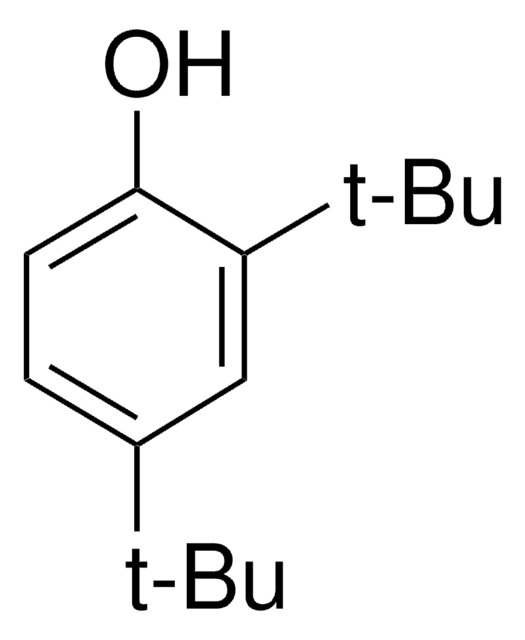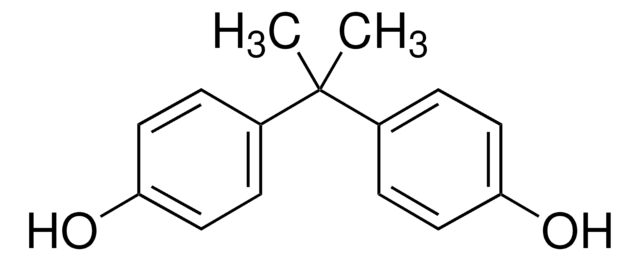290823
4-tert-Octylphenol
97%
Sinónimos:
4-(1,1,3,3-Tetramethylbutyl)phenol
About This Item
Productos recomendados
assay
97%
bp
175 °C/30 mmHg (lit.)
mp
79-82 °C (lit.)
solubility
water: slightly soluble 0.007 g/L at 20 °C
SMILES string
CC(C)(C)CC(C)(C)c1ccc(O)cc1
InChI
1S/C14H22O/c1-13(2,3)10-14(4,5)11-6-8-12(15)9-7-11/h6-9,15H,10H2,1-5H3
InChI key
ISAVYTVYFVQUDY-UHFFFAOYSA-N
Gene Information
mouse ... Esr1(13982)
¿Está buscando productos similares? Visita Guía de comparación de productos
General description
signalword
Danger
hcodes
Hazard Classifications
Aquatic Acute 1 - Aquatic Chronic 1 - Eye Dam. 1 - Skin Irrit. 2
Storage Class
11 - Combustible Solids
wgk_germany
WGK 3
flash_point_f
296.6 °F
flash_point_c
147 °C
ppe
dust mask type N95 (US), Eyeshields, Gloves
Elija entre una de las versiones más recientes:
¿Ya tiene este producto?
Encuentre la documentación para los productos que ha comprado recientemente en la Biblioteca de documentos.
Los clientes también vieron
Nuestro equipo de científicos tiene experiencia en todas las áreas de investigación: Ciencias de la vida, Ciencia de los materiales, Síntesis química, Cromatografía, Analítica y muchas otras.
Póngase en contacto con el Servicio técnico









